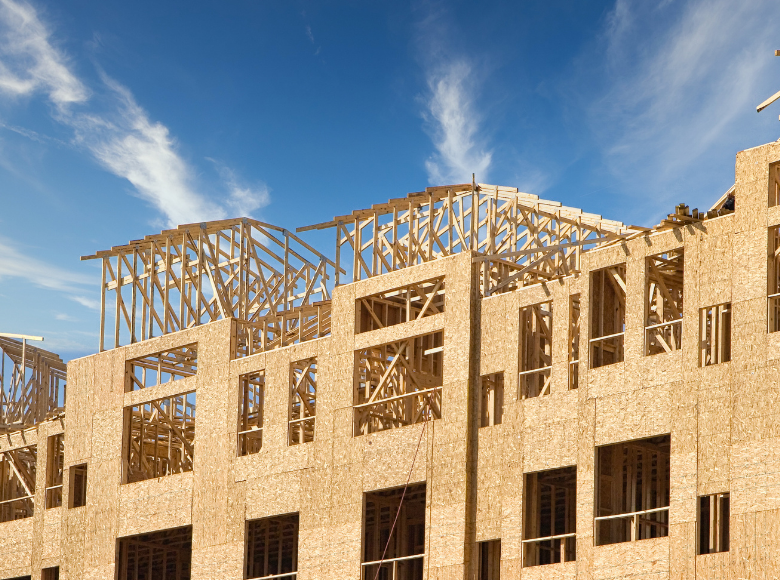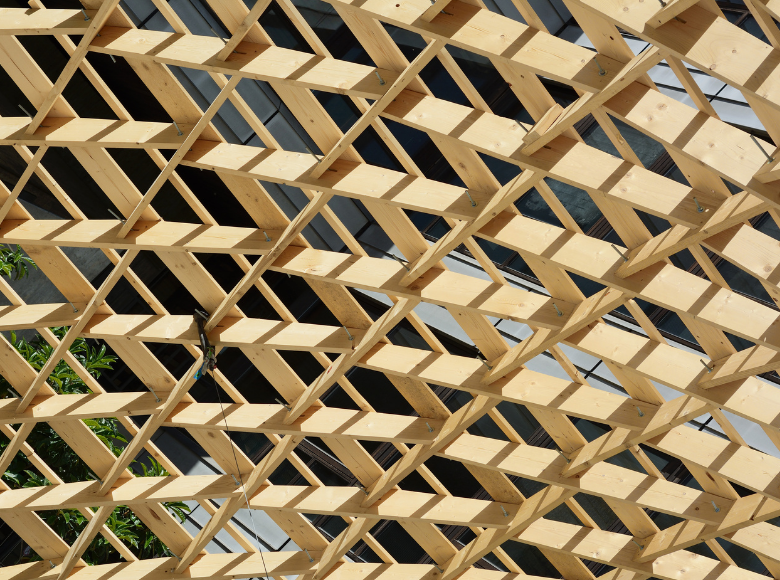Construction is one of the branches of industry that has a great impact on the environment. We need to make some significant changes to overcome the climate crisis. Scientists constantly search for new solutions that will deal with problems such as high energy use that leads to high greenhouse gas emissions produced by construction. What is the key to solving this problem? Can we care for the future by returning to the past?

With industrialisation, concrete and steel became the basic raw materials in the construction industry, replacing timber. However, these materials have many downsides. Despite the continuous development of concrete production technology for example, the majority of this material is produced by traditional methods that generate significant pollution. It is estimated that this process is responsible for about 4%-8% of global greenhouse gas emissions. For this reason, apart from making changes in the composition of concrete and its production method to make it more environmentally friendly, people have also started to search for alternative materials. That is why timber as a building material is now experiencing its renaissance. There are more and more scientists of the opinion that timber should be used as a building material in the future. Thanks to technical development, it can be used both as the sole building material or in combination with modern and eco-friendly concrete, for example. How is it used in the construction industry and have such constructions already been built? You can learn all this in our article.

Opportunity and risk in one
There are both advantages and risks connected with the wide use of timber. That is why its conscious use is essential. Timber harvesting involves the cutting down of forests – in other words deforestation – which is one of the biggest causes of the global climate crisis. Good planning is essential to avoid a negative influence on the environment whilst extracting the raw material. The fundamental action connected with tree felling to source timber should be the replanting of trees. That is how we can avoid a negative balance i.e. deforestation. Planting should happen regularly to avoid periods when the forest stand will be so young that it will not manage to convert the same amount of carbon dioxide as before the felling of old trees. The selection of areas for logging is equally important. We should avoid cutting down old-growth forests, such as the Amazon rainforest. It would be better to choose secondary forests, which have already been cut (at least partly) and which have grown again. They are common in Europe, i.e. in Germany. When we choose such areas, we avoid the permanent destruction of virgin nature untouched by humans. To sum up, a well-chosen logging area and replanting are the key factors which make the extracted timber an eco-friendly material.
Unlimited possibilities
Speaking of wooden buildings, many people think of illustrations in history textbooks or small cabins in the mountains. We can observe the increasing tendency to build wooden houses close to big cities as well. But the truth is that technological development has advanced so that the possibilities to use timber are almost unlimited now. A perfect example is Mjøstårnet – a skyscraper made almost entirely of laminated wooden panels (CLT – Cross-Laminated Timber) located in the city of Brumunddal in Norway. This skyscraper is the tallest timber building in the world. Concrete were used in its construction but only to construct the deck slabs on the top seven floors (it is an 11-storey building). This was done only to prevent residents and visitors from getting seasick due to the building swaying in strong winds. Mjøstårnet meets the strictest tilting standards during hurricanes. In the building there are not only flats but also a 5-star hotel. This example proves that timber, with the use of appropriate technology, can significantly reduce the use of other, less environmentally-friendly, building materials, if not replace them. Products made from timber have many advantages – for example they are relatively lightweight and flexible at the same time. They can also be easily shaped during the production process so that they can be transported as ready-to-use components to the construction site. Together with responsible logging planning and the replanting of new trees as mentioned above, the use of timber will help to reduce the impact that the construction industry has on the environment. It will be possible both because there is much less pollution generated during the production of the building material and because wood is a natural raw material that we can easily source without negatively impacting the environment.

Hope for the future
More environmentally-friendly-sourced wooden buildings and constructions are being built worldwide… Experts describe them as an art, as “lighthouses” that set the trend and direction of development in the construction industry. As the awareness of society increases, there is hope that eco-friendly solutions will begin to be used more widely. The technical development of other traditional raw materials such as concrete will be just as important as the development of modern wood-based materials. With technical development, they can have a much lower impact on the environment and complement the use of wood-based materials, such as those used in Mjøstårnet in Norway. It is the skilful application of all-modern eco-friendly construction solutions that can be our key to success. Technical development in the construction industry is also important because of the ever-growing global population. The need for the building of new constructions necessitates it. Building with the aim of caring for the environment will not only help to combat the current climate crisis but will also get people used to new solutions that have the potential to become the green standard.
Sources:
https://www.dw.com/en/wood-renewable-construction-material-of-the-future/a-42012053
https://edition.cnn.com/style/article/wooden-skyscraper-revolution-timber/index.html
https://www.theguardian.com/cities/2019/feb/25/concrete-the-most-destructive-material-on-earth
